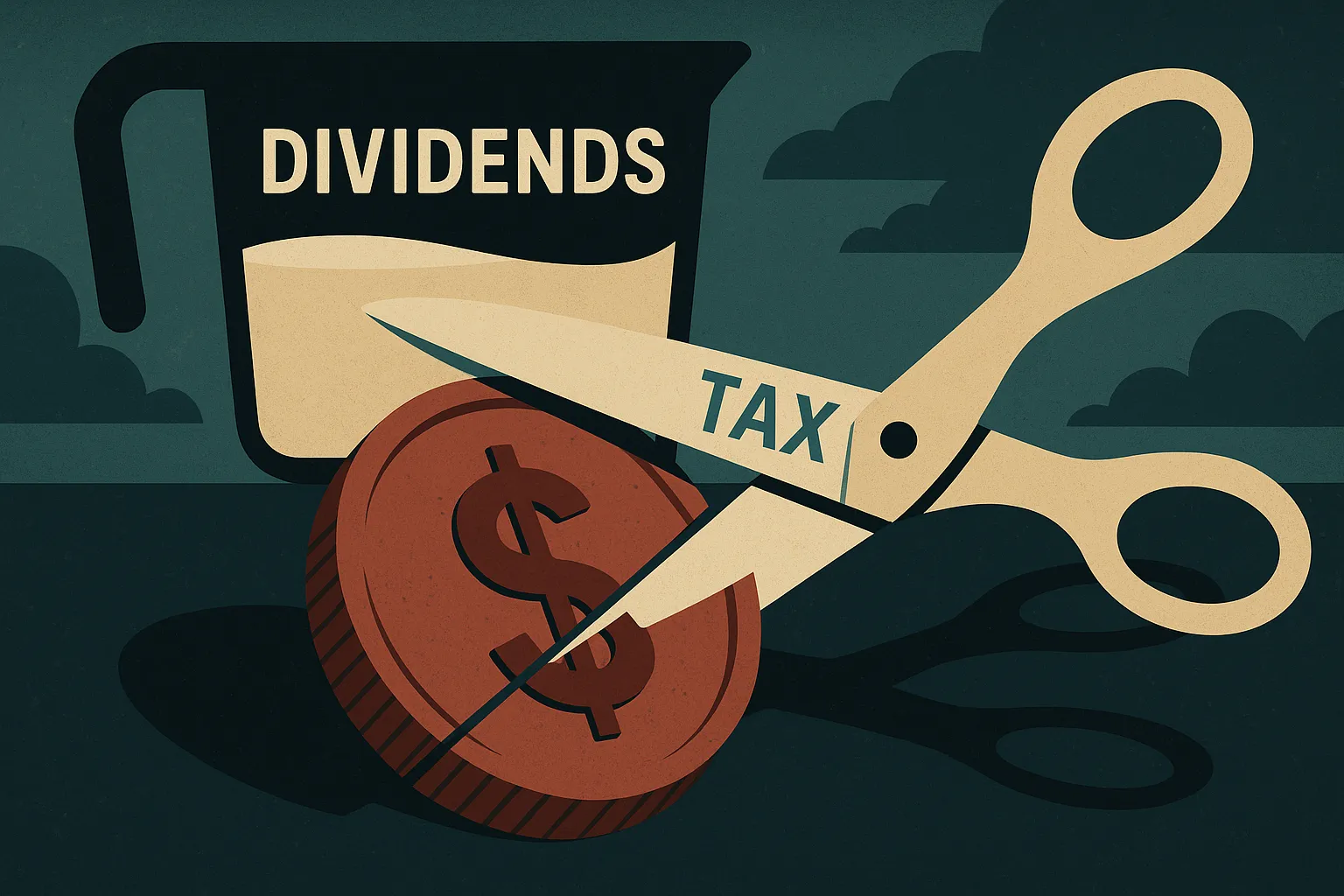Dividend Tax Estimator (qualified vs ordinary) - Tool

What the Dividend Tax Estimator Does
The estimator under current US federal income tax rules provides an educational, high-level picture of how dividends could be taxed in a taxable account. It does not predict returns or give tax advice. Instead, it adds transparency:
- It splits a portfolio’s dividends into two buckets: qualified (generally paid by most US companies and many broad index funds when IRS holding-period rules are met) and ordinary (common for bond funds, REIT distributions, some international funds, short holding periods, and special cases).
- It applies the tax rate the user enters to each bucket, producing a single effective rate and the after-tax yield that may be closer to what actually lands in cash.
So what? A person comparing two similar funds - one with mostly qualified dividends and one with mostly ordinary income - can see that the same headline yield may produce very different after-tax cash in a taxable account.
Key Takeaways
- The tool separates qualified dividends (often taxed at 0%/15%/20% federally) from ordinary dividends (taxed at one’s ordinary income rate) and blends the two.
- Users enter portfolio value, total dividend yield, the share that is qualified, and tax rates; the estimator then shows the effective dividend tax rate, estimated annual tax dollars, and after-tax dividend yield.
- The visual makes it obvious how much of the stated yield actually reaches an account.
Inputs (and why they matter)
The left panel of the tool collects four simple inputs. Each one affects the after-tax yield in a specific way:
- Portfolio value – used to translate percentages into estimated annual tax dollars.
- Dividend yield (% of portfolio) – the pretax dividend rate.
- % of dividends that are qualified – a practical proxy for fund type and holding period.
- Tax rates – the user’s qualified-dividend rate (often 0%/15%/20%) and ordinary-income rate (the marginal bracket many households use for non-qualified income).
After clicking Estimate, the dashboard shows:
- Estimated annual tax (qualified + ordinary).
- Effective dividend tax rate (a weighted average).
- After-tax dividend yield (what might actually hit the account).
- A bar visual that scales to the pretax dividend yield, highlighting the retained portion vs. tax.
- A breakdown table showing qualified/ordinary shares, yields, rates, and dollars.
How to Use It (step-by-step)
- Enter portfolio value (e.g., $250,000).
- Enter dividend yield (say 2.2%).
- Choose the qualified share (for many broad U.S. equity funds, a majority is often qualified; REITs and bond funds tend to be ordinary).
- Input your rates for qualified and ordinary dividends based on your understanding of your tax situation.
- Click Estimate to see:
- Effective tax rate on dividends (e.g., 17.3%),
- After-tax yield (e.g., 1.8%), and
- Estimated annual tax in dollars (e.g., $949).
This is an approximation. It excludes state taxes, NIIT (3.8%), and special rules that can materially affect actual outcomes. Your actual tax liability and effective tax rate may be higher or lower than shown; those can be layered on separately if relevant.
This interactive tool is for educational and illustrative purposes only and is based on simplified assumptions you select. It does not account for all federal tax rules, state or local taxes, NIIT, or your complete financial situation. The results are estimates and are not a prediction of future returns or actual tax liability. Tax laws and rates may change. You should consult your tax, legal, or financial professional about your specific circumstances.
How optimized is your portfolio?
PortfolioPilot is used by over 40,000 individuals in the US & Canada to analyze their portfolios of over $30 billion1. Discover your portfolio score now:






